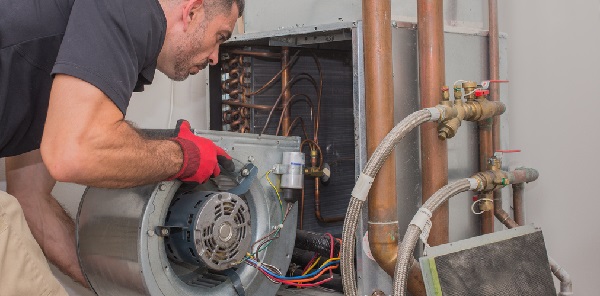
Change in FER standards expected to help fuel shift to EC motors

July 2018
Something significant is on the horizon for HVAC energy conservation regulations. For the first time, the U.S. Department of Energy (DOE) is regulating energy efficiency standards for an individual component instead of the entire HVAC system. These new fan energy rating (FER) standards for gas-fired furnace fans will kick into effect on July 3, 2019. The new standards will require a shift to electronically commutated motors (ECMs) from the induction motors that have been much more commonly used.
The DOE estimates that this change in FER standards will net a savings of approximately 3.99 quads of energy and reduce carbon pollution by as much as 34 million metric tons. That’s close to the amount of electricity used each year in 47 million homes. The change is also expected to keep as much as $9 billion in the pockets of American homeowners through 2030, thanks to decreased home electricity bills. These anticipated savings are impressive and will require a major shift in technology. They’ll also require HVAC and motor manufacturers to think outside the box as they juggle meeting both the new standards and customer expectations.
Nidec Motor Corporation market manager, Rich Bardgett, recently shared some of his thoughts on this anticipated change in technology. “It’s all about CFM per watt. How much air can you move at the greatest efficiency? That’s what everyone’s striving for. Consider states like California, which struggles to keep up with power production. You know they’re doing whatever they can to pull that strain off their grid. Legislation has been implemented impacting pool pumps, and now the FER regulation will address the efficiency of HVAC equipment. That’s what it’s really all about. Greatest efficiency at the lowest cost.”
Balancing affordability with improving technology
This switch from induction motors to ECMs offers such a strong opportunity to meet the new FER standards because induction motors currently operate at only ~60 percent efficiency, while ECMs offer a much better efficiency rate of ~80 percent. Of course, developing innovative new products (and retooling existing ECM offerings) to meet these increased standards also brings the challenge of balancing affordability and reliability along with feasibility.
Even with increased upfront costs, the DOE estimates that homeowners will save approximately $340 to $500 over the furnace fan’s lifetime. On the other hand, consumers will be doing some mental mathematics when an existing induction motor breaks. They’re likely to consider whether they prefer to pay those increased upfront costs to shift to a higher efficiency furnace that will utilize an ECM (saving more money and energy overall) or pay less today to repair an existing induction motor.
Bardgett believes that manufacturers can highlight several ECM benefits to help entice consumers to upgrade their furnaces now rather than waiting. These motors provide quieter starts and operate more quietly than their induction motor counterparts. Increased comfort is another consideration. ECMs operate at a longer cycle with a lower input, meaning that heating and cooling is much more consistent with far fewer sharp temperature fluctuations.
“What OEMs are trying to do with some new motors and systems is make sure that they’re always delivering a constant amount of air depending on whatever the setting is for that speed. So if you’re on cooling and it’s supposed to be 1400 CFM—say you close a couple of the vents in your house and change the static pressure within your duct system—and a constant torque motor, that’s going to affect how much air it delivers. Torque on a motor might remain constant but the amount of air coming out won’t, so a constant CFM motor is going to help make sure it’s delivering that right amount of air so when you’re opening and closing various vents, you’re still getting the correct amount of airflow delivered in the home.”
Tapping in to the home automation trend
One other attractive benefit that manufacturers may start including with their ECMs in the future is that of home automation. According to Bardgett, “We’re rapidly moving toward greater and greater home automation and the technology you have with an ECM in the furnace system creates another opportunity in home automation. For example, I can control my smart thermostat and garage door from my phone; others can control their home lights remotely. It seems like that technology is becoming more and more commonplace. I can definitely see tying HVAC systems and furnace fan motors in to home automation at some point.”
In the months remaining before these new FER standards take effect, OEMs and motor manufacturers are considering how best to meet market and regulatory needs. Some will choose to launch ECM-powered furnace systems to fulfill those requirements and also repurpose current offerings that already satisfy the increased standards. These manufacturers will likely see the biggest bang for their buck by offering both replacement induction motors as well as innovative ECMs that meet the increased FER standards. It’s a win-win strategy that will help them to meet market demands – whichever way individual homeowner calculations shake out.
Sources:
https://www.achrnews.com/articles/136459-fer-standards-require-electronically-commutated-motors
https://www.appliancedesign.com/articles/95833-motor-manufacturers-strive-to-meet-furnace-fan-standards
https://aceee.org/blog/2014/06/taming-energy-hog-efficiency-standard

